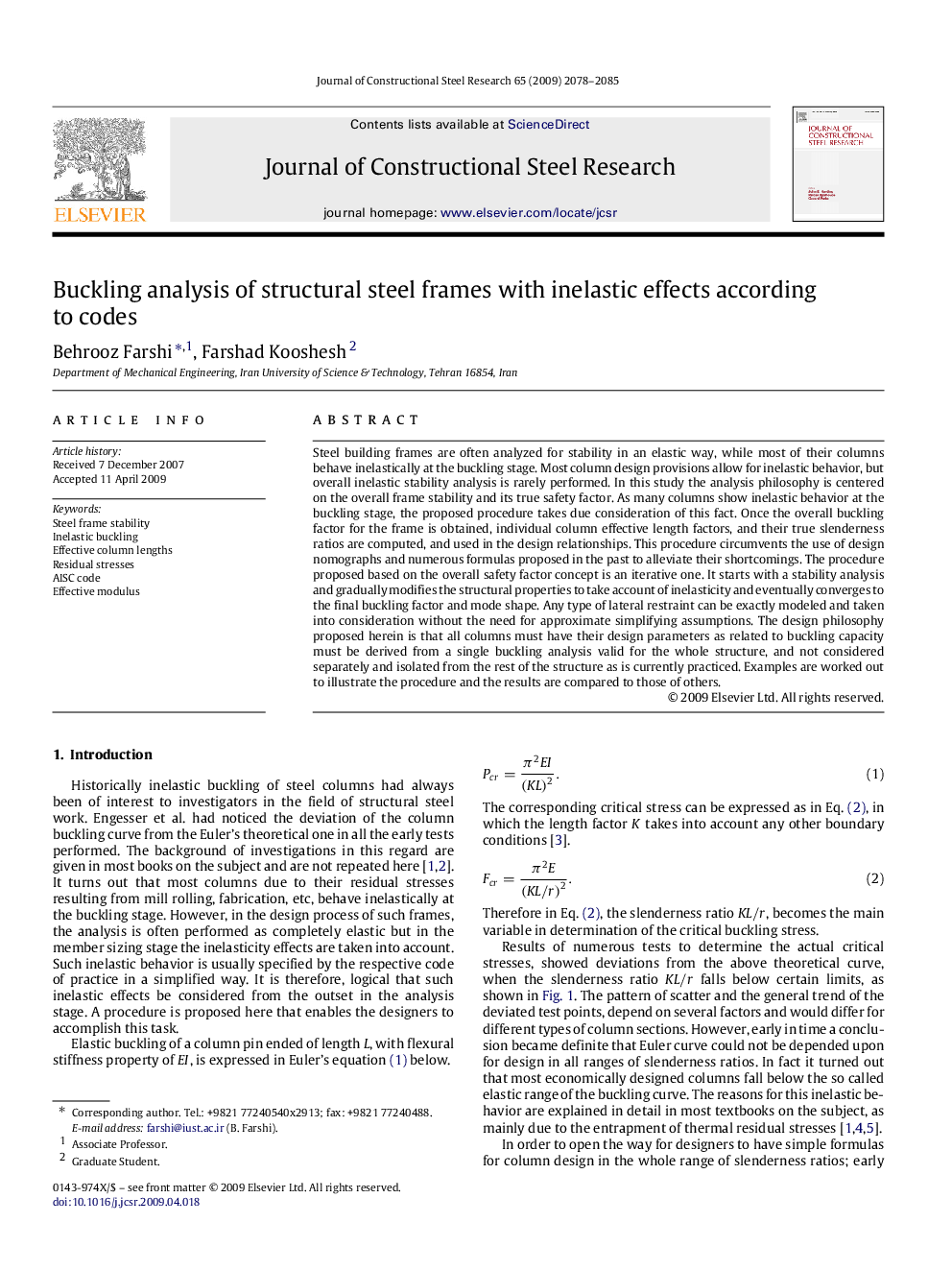| Article ID | Journal | Published Year | Pages | File Type |
|---|---|---|---|---|
| 285891 | Journal of Constructional Steel Research | 2009 | 8 Pages |
Steel building frames are often analyzed for stability in an elastic way, while most of their columns behave inelastically at the buckling stage. Most column design provisions allow for inelastic behavior, but overall inelastic stability analysis is rarely performed. In this study the analysis philosophy is centered on the overall frame stability and its true safety factor. As many columns show inelastic behavior at the buckling stage, the proposed procedure takes due consideration of this fact. Once the overall buckling factor for the frame is obtained, individual column effective length factors, and their true slenderness ratios are computed, and used in the design relationships. This procedure circumvents the use of design nomographs and numerous formulas proposed in the past to alleviate their shortcomings. The procedure proposed based on the overall safety factor concept is an iterative one. It starts with a stability analysis and gradually modifies the structural properties to take account of inelasticity and eventually converges to the final buckling factor and mode shape. Any type of lateral restraint can be exactly modeled and taken into consideration without the need for approximate simplifying assumptions. The design philosophy proposed herein is that all columns must have their design parameters as related to buckling capacity must be derived from a single buckling analysis valid for the whole structure, and not considered separately and isolated from the rest of the structure as is currently practiced. Examples are worked out to illustrate the procedure and the results are compared to those of others.
